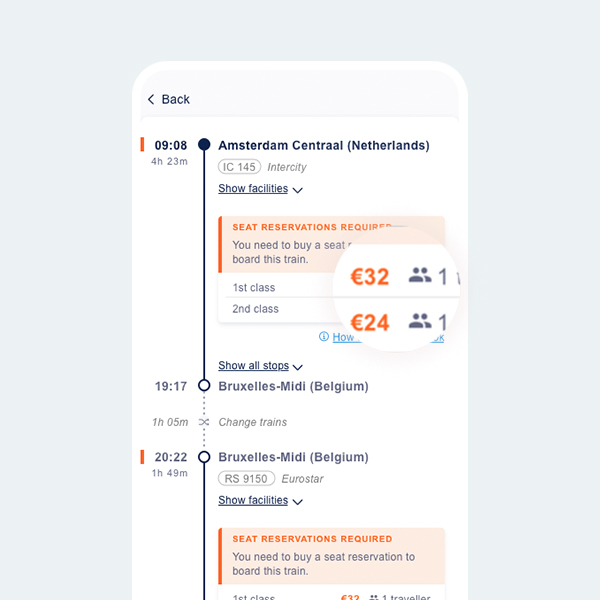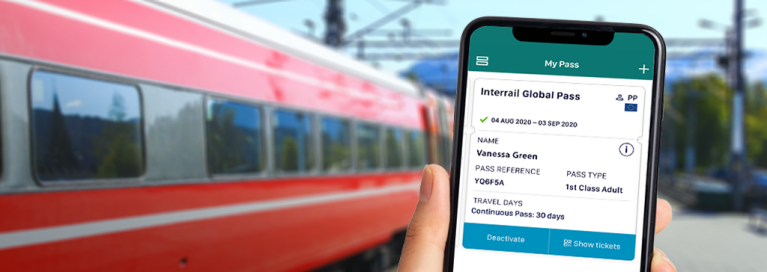How to plan your Interrail itinerary
A step-by-step guide
There are some travellers who plan a trip down to the smallest detail, and others who value complete spontaneity, while many fall somewhere in between. Luckily, with the Interrail Pass, there is a place for us all. This guide will help you prepare for your next Interrail adventure, no matter what your style of travel.
Step 1: Decide when to go
Deciding when to go is currently more complicated than usual, as we do our part to manage the Coronavirus pandemic. Luckily, Europe has a lot to explore at all times of the year. So you'll be able to discover new destinations and experiences, whatever season it becomes safe to do so.
In general, the summer has the best weather, but can be crowded in popular areas and you’ll have to make train reservations in advance on certain trains. The winter is cold in much of Europe, but you can enjoy winter sports, or a warm weather getaway in the south of the continent. The shoulder season (spring or autumn) is an excellent compromise, since the temperatures are mostly amiable and crowds have greatly dissipated.
Step 2: Choose where to go
Open up the latest Interrail Map here. Ahhh, Europe. So many great places to visit and railway lines to get you there! When choosing where to go, you should take into account the latest Coronavirus measures, summarised here. But also remember that your Interrail Pass is valid in 33 countries, so as long as a country is open and safe, you can see all of it!
If you've never explored Europe before, you might want to hit up the classic highlights: Paris, Amsterdam, Berlin, Prague, Budapest, Venice and Rome. These cities are a good starting point, with sights, culture, history, nightlife, and romance, in the centre of Europe.
If you've seen them all before, you might want to consider some alternatives:
- Scandinavia - beautiful scenic routes and seasonal specialities
- Spain and Portugal - sunny laid-back vibes with some wonderful food and wine
- The Balkans and south-east Europe - exciting and less-explored

Step 3: How to go
The key to a successful trip is often good planning. A well-planned trip to Europe will leave you with less uncertainties and more peace of mind. Train schedules are printed at least a year in advance. Reservations can be made up to three months in advance and depending on the trains you select, it may be possible to plan out and reserve your entire Interrail trip before you leave home, so keep this in mind when you plan your Interrail itinerary.
Alternatively, go-with-the-flow travellers who are equipped with an Interrail Pass have the type of freedom to make last-minute decisions. You could be standing in Prague’s main station moments before a departing train to Berlin and another to Vienna and still not have made up your mind. This is an exciting way to travel, but certainly a more uncertain way: you may be limited to regional train lines if all reservations are booked. Although this is no bad thing - regional trains allow you to see different and smaller towns, while avoiding reservation fees.

More than likely, you’ll need to be a little bit flexible. You can make certain city-to-city reservations on high-speed trains, but other destinations on your itinerary may only include regional trains which do not take reservations. For these trains you can find the travel times in the Rail Planner app and just show up at the station in time to catch the train.
On other trains, reservations are recommended but not mandatory. If you have somewhere to be or want to be guaranteed seating by your travel buddies, this is a good opportunity to reserve.
Step 4: Research train times
After you’ve mapped out your itinerary, you can research train times. You can find them on the Planner tab of the Rail Planner app, or here on our website. In addition to train times, this gives you essential information like the train type and whether reservations are required. Other route information, like number of train transfers, is precisely noted.
Step 5: Make reservations if necessary
As a general rule, high-speed trains and night trains require a reservation and associated fee. This is an important consideration when you plan your Interrail itinerary. Regional trains usually do not. To know exactly which trains require reservations, consult the timetable.
Many reservations can be made on the Rail Planner app or through our Self-Service. You can book reservations up to 3 months in advance. E-ticket reservations can be made up until 3 hours before the train's departure, while paper ticket reservations must be made at least 6 days before.
When a train can't be booked through our Self-Service, you can find alternative ways to book your reservations here.

Step 6: Understand your Interrail Pass
The more you read ahead of time, the more you’ll get out of your Interrail Pass. For example, know that you can buy a Pass for 1st or 2nd class travel, depending on your preference. Understand that a travel day lasts 24 hours, from midnight to midnight, but there are special quirks like for night trains, when you only need to use the day of departure.
It’s also useful to know that your Pass grants you access to many benefit discounts, for ferries, public transport, accommodation and more.

Step 7: Have the time of your life!

Change of currency
You cannot change the currency once you have a Pass in your cart. Remove the Pass, and then change the currency on the website header.






